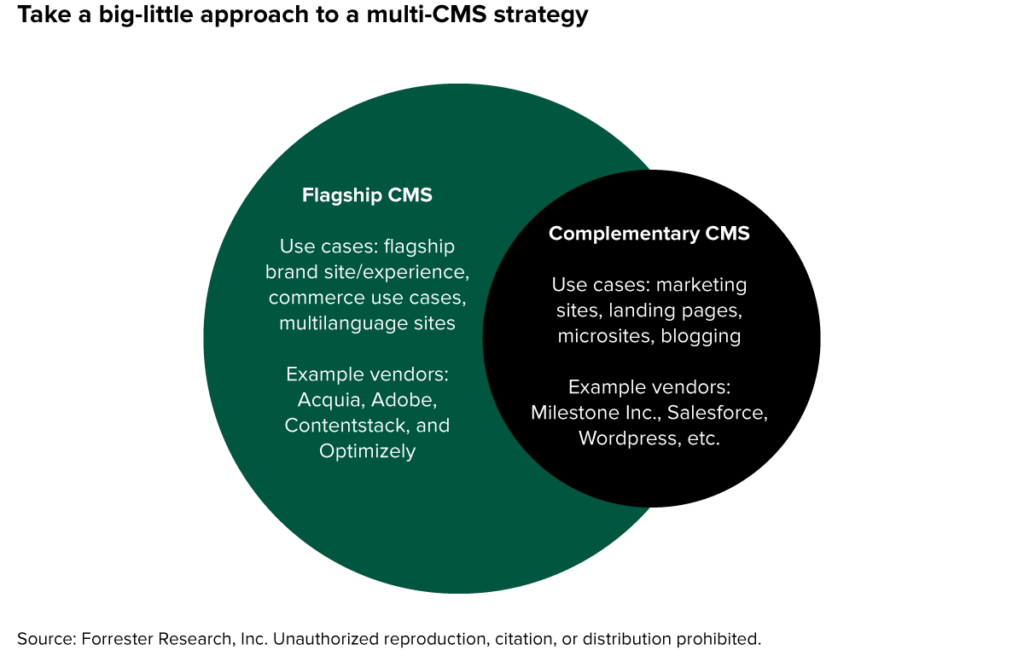Three Reasons Why A Multi-CMS Approach May Be Right For Your Brand
The content management system (CMS) space is white-hot because that’s how digital brands present themselves to the world. In fact, our latest Forrester Wave™ evaluation on Agile CMSes was among the top-read research at Forrester in 2021. But just because one CMS may suit the needs for your peers doesn’t mean it’s right for you. Although tech consolidation remains a top priority for many technology and marketing leaders, many digital experience professionals are turning to a multi-CMS approach to drive agility, flexibility, and speed to market. For my recent report, Making The Case For A Multi-CMS Strategy, we spoke with several smart brands that used a multi-CMS strategy to drive their future fit strategy, ultimately becoming more adaptive, resilient, and creative. These brands took a big-little approach when it came to their CMS portfolio.

Here are three key reasons why a multi-CMS strategy works for your brand:
- Your marketing team needs greater flexibility and agility.
- You want to improve your content’s speed to market.
- Your teams need certain CMS capabilities that your flagship CMS does not support.
If you find yourself resonating with one of the above reasons, you aren’t alone. Brands told us stories of struggling to create localized websites, new product landing pages, and specific authoring capabilities. The solution was turning to a multi-CMS strategy. In doing so, brands gained speed to market, agility, and flexibility, as well as new CMS capabilities that their flagship CMS lacked. In order to optimize your CMS portfolio, brands should take the following key steps:
- Define your strategic goal to reassess if your CMS ecosystem is a fit. If your goal is to get content to market faster, then a multi-CMS strategy may help.
- Inventory-audit your systems and content. Figure out what systems you have and what content needs to flow into (or out of) them, and use my report on conducting a content audit to understand what content lives where, what systems need to use it, and who needs access to it.
- Empower your content teams and eliminate obstacles. If your marketing team is suffering from obstacles and is struggling to improve speed to market, look to a multi-CMS strategy to improve time-to-market, number of leads, and enhance your customer experience.
Remember, content powers your customer experience, and optimizing your CMS portfolio will move you one step closer to becoming future fit. If you want to learn more about whether or not a multi-CMS strategy is right for your organization, read my full report and stay tuned for our Agile CMS Now Tech report that will highlight 30-plus agile CMS vendors. If you want to talk further about a multi-CMS strategy and what I am seeing in the market, I would love to talk to you!
